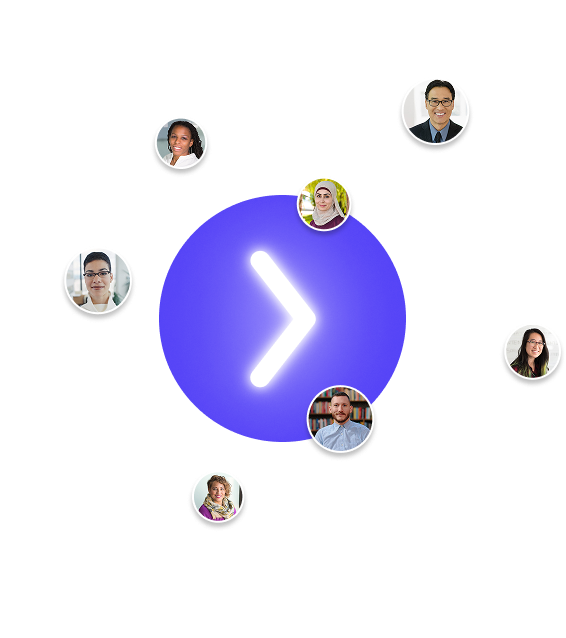
Subscribe to our Blog
We're committed to your privacy. SayOne uses the information you provide to us to contact you about our relevant content, products, and services. check out our privacy policy.

Ranju R May 30, 202411 min read

Generating table of contents...
The web development life cycle is a systematic approach to creating websites and web applications, guiding developers through each phase to ensure a high-quality final product. This cycle helps organize tasks, manage timelines, and coordinate efforts across a development team.
Adhering to a structured life cycle is crucial for several reasons:

Requirement analysis is a critical phase in the web development life cycle. It sets the foundation for the entire project by gathering and defining what the software needs to achieve.
Here's a breakdown of what this phase entails:
The first step in requirement analysis is to gather information from stakeholders. This includes conducting interviews, surveys, and focus groups. Developers need to understand the business goals and processes to ensure the software meets the needs of the organization.
Once the information is gathered, the next step is to analyze these requirements. This involves identifying the necessary features and functions of the software and prioritizing them. Developers break down these requirements into smaller tasks and create detailed descriptions for each one, including use cases and potential issues.
After analyzing the requirements, they are documented in a requirement specification document. This document includes both functional and non-functional requirements, ensuring a comprehensive guide for the development team. It also serves as a reference for stakeholders throughout the project.
Validation is crucial to ensure that the documented requirements are accurate and complete. This involves reviewing the requirements with stakeholders and making necessary adjustments. The goal is to create a precise blueprint that guides the development process and meets stakeholder expectations.
Effective requirement analysis involves collaboration with various stakeholders, including clients, end-users, and team members. This ensures that all perspectives are considered and that the final product aligns with the needs and expectations of all involved parties.
Requirement analysis is essential for identifying potential risks early, avoiding misunderstandings, and setting clear goals for the development team. By thoroughly documenting and validating requirements, teams can ensure a smoother development process and deliver a product that truly meets user needs.
The planning phase is the cornerstone of the web development life cycle. It sets the foundation for the entire project by defining its scope, setting goals, and creating a comprehensive roadmap for development.
During this phase, developers and clients collaborate to determine the project's objectives and requirements. This collaboration helps in understanding the purpose of the website, the target audience, and the specific goals the project aims to achieve. By establishing clear objectives, the planning phase ensures that all subsequent steps are aligned with the project's vision and goals.
The next step is to develop a detailed project roadmap. This roadmap outlines the project's timetable, budget, and scope. It includes key milestones and deliverables, ensuring that the project progresses smoothly and stays on track. Reviewing a project proposal example can provide clarity on structuring your roadmap to align with business goals and stakeholder expectations.The roadmap guides the development team, helping them manage resources efficiently and meet deadlines effectively.
Choosing the right technology stack and tools is crucial during the planning phase. This involves selecting programming languages, frameworks, and software that best suit the project's needs. The choice of technology impacts the website's performance, scalability, and future maintenance, making this a critical decision point.
Identifying potential risks and developing mitigation strategies is another vital component of the planning phase. By assessing risks early, the team can devise contingency plans to address any challenges that may arise during development. This proactive approach helps in minimizing disruptions and ensures a smoother development process.
A well-structured team with clearly defined roles and responsibilities is essential for project success. During the planning phase, team members are assigned specific tasks based on their expertise. This clear delegation of duties helps in maintaining accountability and ensures that each aspect of the project receives the necessary attention.
Content is a crucial element of any website. The planning phase includes developing a content strategy that outlines what type of content will be created, how it will be structured, and who will be responsible for its creation and maintenance. This strategy ensures that the website's content aligns with its goals and resonates with the target audience. If needed, partnering with a content writing agency can help ensure high-quality content that enhances engagement and drives conversions. It is also important to evaluate the platform that will host your content to avoid potential limitations. Understanding WordPress disadvantages helps you make informed decisions about content management, performance, and scalability before committing to the platform.
Wireframes and sitemaps are essential tools in the planning phase. Wireframes provide a basic structure of the website's layout, helping visualize the placement of various elements. Sitemaps outline the website's structure, showing the relationship between different pages and sections. These tools help organize content and ensure a logical flow throughout the site.
Checkout the 9 Responsive Web Design Principles You Should Know

The design phase is where your website begins to take shape visually. This stage focuses on creating the site's layout, visual elements, and user experience (UX).
Initially, designers create wireframes, which are basic visual guides that outline the structure of the site. Wireframes are typically low-fidelity sketches that map out essential components and user flow. They help in visualizing the layout without the distraction of colors or graphics.
Once wireframes are approved, high-fidelity prototypes are developed. These are more detailed and closer to the final design, allowing for testing and refinement of the user experience.
In this step, the visual identity of the website is established. This includes choosing color schemes, typography, and imagery that align with the brand's identity and appeal to the target audience. The goal is to create a cohesive and aesthetically pleasing interface for user engagement. Consistency across all pages is crucial to provide a smooth user experience.Staying aware of current web design trends also helps ensure the visual approach feels modern and aligns with user expectations.
Ensuring the website is accessible to all users, including those with disabilities, is a key part of the design phase. This might involve implementing features like keyboard navigation, screen reader compatibility, and alternative text for images. Usability testing helps identify and fix areas where users might face difficulties, ensuring the design is user-friendly and inclusive.
Design is an iterative process. After creating the initial designs, feedback is gathered from stakeholders and potential users. This feedback is used to refine and improve the design. Regular communication and collaboration between designers, developers, and stakeholders ensure that the final product aligns with the project's goals and user expectations.
The development phase is where the actual construction of your website takes place. This is the most time-consuming part of the web development life cycle, as it involves building both the front-end and back-end of the website.
Front-End Development
Front-end development focuses on what users interact with directly. It involves converting design prototypes into a functional website using HTML, CSS, and JavaScript. This phase includes integrating all visual elements, such as buttons, menus, and graphics, ensuring the website is both responsive and user-friendly. For optimal results, frameworks like Bootstrap and Foundation are often used to fasten up the development process. Some companies also opt to hire NoSQL developers for in real-time web applications development.
Checkout the 9 Benefits of Using AngularJS for Web Development
Back-end development is about making the website functional. It involves server-side development, which includes database management, server scripting, and application logic. Common languages and frameworks used in this phase include PHP, Python, Ruby on Rails, and Node.js. This phase ensures that all the data processing and storage operations run smoothly and securely, providing the necessary infrastructure for the front end to operate effectively.
After developing both the front-end and back-end, the next step is integration. This is where the different components of the website are brought together and tested to ensure they work well. Usability testing is conducted to identify issues and ensure the website functions correctly across different devices and browsers.
Read More on Full-Stack Development :A Complete Guide
The testing phase is crucial in the web development life cycle, ensuring that the website functions as intended and meets all requirements before it goes live. Here's a breakdown of the different types of testing involved:
Deployment is a crucial phase in the web development life cycle where your developed website or application is made live for users. Here's a step-by-step overview of the deployment process:
Before deploying, ensure your code is finalized, and all features are implemented. Set up a version control system like Git to manage different versions of your code and allow multiple developers to collaborate without conflicts. Ensure that all resources, such as databases and external APIs, are ready and populated with initial data.
Transfer your web application from the development environment to the production server. This can be done manually using FTP or SSH or automatically through a CI/CD pipeline. Ensuring a smooth transfer helps make the application accessible to users.
Once transferred, your application is launched on the production server and made available to users via a specific URL. This is the point where your website or application becomes publicly accessible.
Post-deployment, ongoing maintenance is essential to ensure optimal performance and user satisfaction. This involves:
Updates and Improvements: Regularly update the application to add new features, improve user experience, and maintain security standards
Ready to take your web application to the next level? At SayOne Tech, we excel at every stage of web development and deployment. From initial concept to end-user launch, we ensure your web app is built and launched efficiently. Contact us today to bring your vision to life!

We're committed to your privacy. SayOne uses the information you provide to us to contact you about our relevant content, products, and services. check out our privacy policy.

About Author
Helping businesses scale-up their development teams ( Python, JavaScript, DevOps & Microservices)

We collaborate with visionary leaders on projects that focus on quality